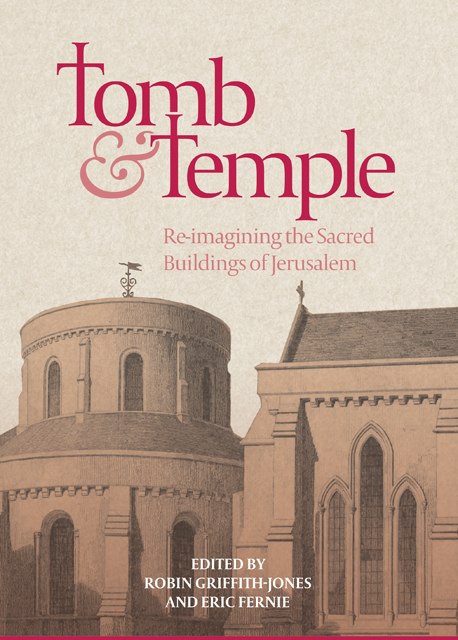Book contents
- Frontmatter
- Contents
- Illustrations
- Preface
- Contributors
- Abbreviations
- Editors’ Note
- Introduction
- Part I Re-presenting Jerusalem
- Part II The Church of the Holy Sepulchre
- Part III The Noble Sanctuary / The Temple Mount
- Part IV The Orthodox Churches
- Part V Round Churches in the West
- Appendix: The Knights’ Effigies: Newly Discovered Drawings by John Guillim, c. 1610
- Epilogue
- Index
- Already Published
13 - Jerusalem and the Ethiopian Church: The Evidence of Roha (Lalibela)
Published online by Cambridge University Press: 17 January 2023
- Frontmatter
- Contents
- Illustrations
- Preface
- Contributors
- Abbreviations
- Editors’ Note
- Introduction
- Part I Re-presenting Jerusalem
- Part II The Church of the Holy Sepulchre
- Part III The Noble Sanctuary / The Temple Mount
- Part IV The Orthodox Churches
- Part V Round Churches in the West
- Appendix: The Knights’ Effigies: Newly Discovered Drawings by John Guillim, c. 1610
- Epilogue
- Index
- Already Published
Summary
Studies of the early history of Christianity, whether based on doctrinal matters, on associated architecture or on other areas of material culture, have tended to pay remarkably little attention to the highland areas of Africa’s northern Horn, now divided between the nations of Ethiopia and Eritrea. Milburn’s Early Christian Art and Architecture, in all its 318 pages, devoted a mere thirty-one words to this region, while pro rata the nine-volume Cambridge History of Christianity did slightly better, with one whole chapter out of 273. Conversely, most studies of Ethiopian history have failed adequately to consider the existence of two-way relationships between their subject area and its co-religionist partners and neighbours. These blinkered perspectives do not adequately reflect past realities. In the first part of this chapter, I seek to remedy these deficiencies and to combine literary, archaeological and art-historical studies in an attempt to set Ethiopian Christianity in its broader context, with particular emphasis on its connections with Jerusalem. I then proceed to consider the renowned complexes of rock-hewn churches at the place now usually called Lalibela (but formerly Roha) and to re-evaluate claims that have been made regarding their age, affinities and significance in the wider history of Christianity prior to the thirteenth century. I conclude that Roha’s connections with Jerusalem may have been rather less strong than some previous writers have believed.
Much confusion has been caused by the various applications of the term ‘Ethiopia’ during the past two thousand years. First-millennium speakers of Greek and/or Latin used the term somewhat vaguely and indiscriminately to indicate any area of the African continent to the south of Egypt. Frequently, they referred to the parts of the Nile Valley now known as Nubia, but to the Ancient Egyptians as ‘Kush’; references to ‘Kus’ in the Hebrew bible were translated into Greek and Latin as ‘Ethiopia’. The ‘Ethiopian eunuch’ mentioned in the Acts of the Apostles was a servant of Candace, a designation applied to the queen mothers of Meroitic Nubia, yet to this day the Ethiopian Church claims him as evidence for its own existence in the first century AD.
- Type
- Chapter
- Information
- Tomb and TempleRe-imagining the Sacred Buildings of Jerusalem, pp. 255 - 266Publisher: Boydell & BrewerPrint publication year: 2018



